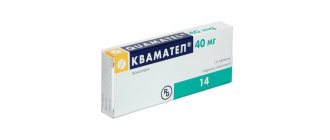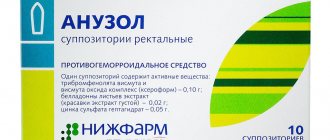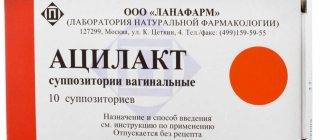With gastritis, ulcers and other lesions of the stomach, increased secretion of hydrochloric acid is observed - the main component of gastric juice. The result is ulcers, pain, digestive disorders and other consequences. Various medications are used to prevent it, including Rabeprazole. This is an effective remedy at an affordable price.
Pharmacological properties of the drug Rabeprazole
Antisecretory agent, proton pump blocker of the group of substituted benzimidazoles. Suppresses gastric secretion by specifically inhibiting the enzyme H+/K+ -ATPase on the secretory surface of parietal cells. Pariet is converted to the active sulfenamide form by protonation and thus reacts with accessible proton pump cysteine residues. After oral administration at a dose of 20 mg, the antisecretory effect occurs within 1 hour and reaches a maximum after 2–4 hours. Inhibition of basal and stimulated secretion of hydrochloric acid 23 hours after taking rabeprazole is about 62 and 82%, respectively, and the duration of action is 48 hours A stable antisecretory effect is achieved 3 days after the start of treatment. After stopping taking rabeprazole, secretory activity returns to normal within 2–3 days. During the first 2–8 weeks of therapy, the concentration of gastrin in the blood serum increases, which reflects the inhibition of the secretion of hydrochloric acid in the stomach. Gastrin concentrations usually return to baseline levels within 1–2 weeks after completion of treatment. The use of the drug does not cause morphological changes and the prevalence of H. pylori . Rabeprazole is broken down by hydrochloric acid, so it is used in an enteric dosage form. In the intestine, rabeprazole is rapidly absorbed, its maximum concentration in the blood plasma is reached approximately 3.5 hours after oral administration at a dose of 20 mg. The degree of absorption does not depend on food intake or time of use. The pharmacokinetics of rabeprazole sodium is linear in the dose range of 10–40 mg. Absolute bioavailability after oral administration is approximately 52% due to the first pass effect through the liver. With course use of rabeprazole, bioavailability does not increase. The half-life is approximately 1 hour (0.7–1.5 hours), the total clearance is 283 ± 98 ml/min. In patients with end-stage renal disease undergoing hemodialysis, the distribution of rabeprazole is close to that in healthy subjects, while the AUC of rabeprazole sodium and its maximum plasma concentration are almost 35% higher in such patients compared to healthy volunteers. After a single dose of rabeprazole 20 mg in patients with moderate hepatic impairment compared to healthy volunteers, the AUC almost doubles and the half-life increases by 2-3 times. In elderly patients, the elimination of rabeprazole is somewhat slower. After 7 days of taking rabeprazole sodium at a dose of 20 mg/day in elderly people, the AUC is approximately twice as high and the maximum plasma concentration is 60% higher compared to healthy young volunteers.
Instructions for use "Rabeprazole"
The drug is taken orally with water. The initial dosage is from 10 to 20 mg of the active substance, which corresponds to 1-2 capsules. The total amount and duration of the course depend on the nature of the disease. The appointment is carried out on the recommendation of a doctor. No cases of overdose have been reported to date.
Important!
In childhood, taking the drug is not recommended, since relevant studies on the effect of the drug on health have not been conducted.
Use of the drug Rabeprazole
For adults, including elderly patients, with peptic ulcers of the stomach and duodenum, 20 mg is prescribed 1 time per day in the morning. Duration of use is an average of 4 weeks (in the absence of scarring of the ulcer - up to 8 weeks) if the ulcer is localized in the duodenum and 6 weeks (sometimes - up to 12 weeks) if the ulcer is localized in the stomach. For erosive or ulcerative gastroesophageal reflux disease, 20 mg is prescribed once a day for 4–8 weeks. The maintenance dose for this pathology is 10–20 mg/day.
Indications for use
The drug has antiulcer activity. It is prescribed in the presence of such pathologies:
- stomach ulcer;
- ulcerative lesions of the duodenum (also during an exacerbation);
- increased secretion of gastric shock;
- Zollinger-Ellison syndrome;
- gastritis of various types, including chronic (in this case, antibacterial drugs are taken simultaneously);
- relapses of peptic ulcer associated with the action of the bacterium Helicobacter pylori;
- reflux disease of the gastroesophageal type.
Drug interactions Rabeprazole
Rabeprazole does not interact with clinically significant interactions with other drugs metabolized by CYP 450 enzymes, such as warfarin, phenytoin, theophylline and diazepam. The use of rabeprazole causes a pronounced and long-term decrease in the production of hydrochloric acid, and therefore it can interact with drugs whose absorption depends on the pH of the stomach contents. The simultaneous use of rabeprazole reduces the concentration of ketoconazole in the blood plasma by almost 33% and increases the concentration of digoxin by 22%, which requires adjustment of their doses. No interaction of rabeprazole with antacids was found.
Contraindications and side effects
In some cases, taking the drug is excluded:
- hypersensitivity to the active ingredient;
- pregnancy period;
- breastfeeding period.
When taking the drug, side effects may occur from both the digestive system and other systems:
- loss of appetite;
- flatulence;
- constipation;
- nausea, vomiting;
- diarrhea;
- headaches;
- dizziness;
- drowsiness;
- taste disturbances;
- stomatitis;
- visual impairment;
- myalgia;
- pain in the spine;
- feverish condition;
- convulsions;
- arthralgia;
- allergic reactions (rash);
- cough;
- sinusitis;
- runny nose.
If the described phenomena occur, the drug should be stopped. Consultation with a doctor and symptomatic treatment are indicated.
Similar drugs:
- Omez Capsule
- Omeprazole Capsule
- Ortanol Capsule
- Omez D Capsule
- Calcium carbonate Substance-powder
- Zulbeks Oral tablets
- Quamatel Lyophilisate for the preparation of a solution for intracavernous administration
- De-Nol Oral tablets
- Metronidazole Injection solution
- Venter Oral tablets
** The Drug Directory is intended for informational purposes only. For more complete information, please refer to the manufacturer's instructions. Do not self-medicate; Before starting to use the drug Rabeprazole, you should consult a doctor. EUROLAB is not responsible for the consequences caused by the use of information posted on the portal. Any information on the site does not replace medical advice and cannot serve as a guarantee of the positive effect of the drug.
Are you interested in the drug Rabeprazole? Do you want to know more detailed information or do you need a doctor's examination? Or do you need an inspection? You can make an appointment with a doctor - the Euro lab is always at your service! The best doctors will examine you, advise you, provide the necessary assistance and make a diagnosis. You can also call a doctor at home . Euro lab clinic is open for you around the clock.
** Attention! The information presented in this medication guide is intended for medical professionals and should not be used as a basis for self-medication. The description of the drug Rabeprazole is provided for informational purposes and is not intended for prescribing treatment without the participation of a doctor. Patients need to consult a specialist!
If you are interested in any other drugs and medications, their descriptions and instructions for use, information about the composition and form of release, indications for use and side effects, methods of use, prices and reviews of drugs, or you have any other questions and suggestions - write to us, we will definitely try to help you.
Rabeprazole, 28 pcs., 20 mg, enteric-coated tablets
Before and after treatment, endoscopic monitoring is required to exclude malignant neoplasms, because Treatment may mask symptoms and delay correct diagnosis.
Rabeprazole tablets should not be chewed or crushed. The tablets should be swallowed whole. It has been established that neither time of day nor food intake affects the activity of rabeprazole.
In a special study in patients with mild or moderate hepatic impairment, the incidence of side effects of rabeprazole was not found to be significantly different from that in age- and sex-matched healthy individuals, but despite this, caution is recommended when first prescribing the drug to patients with severe impairment. liver.
For patients with impaired renal or hepatic function, dosage adjustment of rabeprazole is not required. The AUC of rabeprazole sodium in patients with severe hepatic impairment is approximately two times higher than in healthy patients.
Hypomagnesemia
Rare cases of symptomatic or asymptomatic hypomagnesemia have been reported when treated with PPIs for at least 3 months. In most cases, these reports were received one year after therapy. Serious adverse events included tetany, arrhythmia, and seizures. Most patients required treatment for hypomagnesemia, including magnesium replacement and PPI discontinuation. In patients who will be receiving long-term treatment or who are taking PPIs with drugs such as digoxin or drugs that can cause hypomagnesemia (eg, diuretics), health care providers should monitor magnesium concentrations before initiating PPI treatment and during treatment.
Patients should not take other acid-reducing agents, such as H2-histamine blockers or proton pump inhibitors, at the same time as rabeprazole.
Bone fractures
PPI therapy may increase the risk of osteoporosis-related fractures of the hip, wrist, or spine. The risk of fractures is increased in patients receiving high doses of PPIs for a long time (a year or more).
Concomitant use of rabeprazole with methotrexate
According to the literature, simultaneous use of PPIs with methotrexate (primarily in high doses) can lead to increased concentrations of methotrexate and/or its metabolite hydroxymethotrexate and increase the half-life. which can lead to methotrexate toxicity. If high doses of methotrexate are required, temporary discontinuation of PPI therapy may be considered.
Infections caused by Salmonella, Campylobacter and Clostridium difficile
PPI therapy may lead to an increased risk of gastrointestinal infections, such as those caused by Salmonella, Campylobacter, and Clostridium difficile.
Impact on the ability to drive vehicles and operate machinery
Based on the pharmacodynamics of rabeprazole and its profile of undesirable effects, it is unlikely that rabeprazole affects the ability to drive vehicles and machinery. However, if drowsiness occurs, these activities should be avoided.
special instructions
The course of treatment with Rabeprazole should begin with a check of the gastrointestinal tract. If malignant tumors are detected, you should not take the drug, since the medicine masks some of the symptoms of cancer. This can make them difficult to diagnose and treat because time will be lost.
The drug should be taken with caution in cases of diagnosed liver disease. If taken simultaneously with Digoxin and Ketonazole, the dosage of these drugs must be adjusted.
One of the possible side effects of Rabeprazole is increased fatigue and drowsiness. Therefore, drivers and operators of moving machinery should take the product with caution. During therapy, you may have to temporarily give up work that requires increased concentration.







